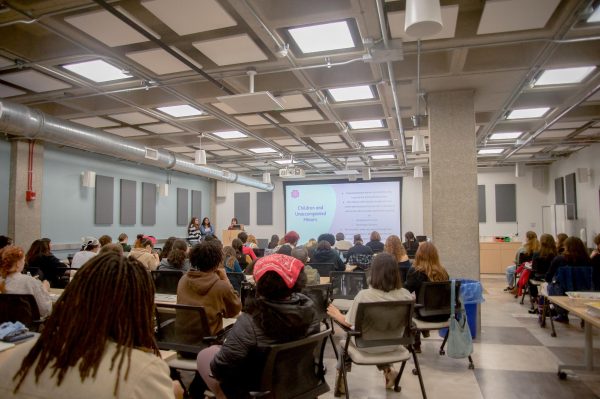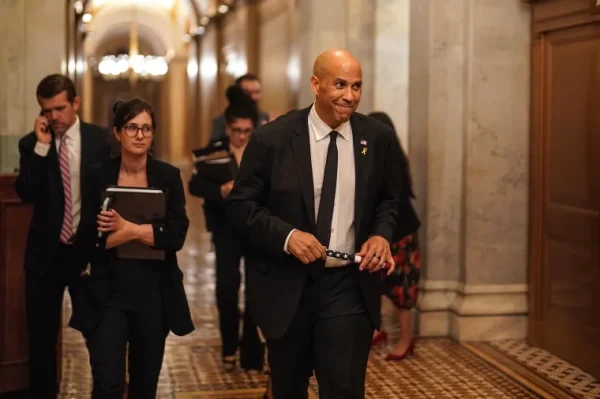Nuclear Represents Best Option
If you watched Chernobyl, HBO’s harrowing dramatization of the 1986 nuclear catastrophe in Ukraine, you probably noticed brooding scowls, gloomy stoicism, and pointed downtroddenness. It’s not surprising that a show targeted toward a mainstream audience would play up the tropes surrounding the murky idea of “nuclear” in many American minds. In fact, for a lot of us, these tropes of disaster, despair, and cold weather make up the entirety of our understanding of nuclear energy. I’ve been skeptical too, probably a direct result of playing the “Nuketown” map on Call of Duty as a kid. But I’m happy to say I’ve reviewed more accurate literature, and confidently believe that the future is nuclear.
Right now, about 20 percent of U.S. energy production comes from nuclear power. One-fifth of the energy market might seem like a great deal of energy, but it starts to look much smaller when you consider that zero percent of greenhouse gas emissions come from nuclear power plants. Of course, there are other emission-free renewable energy sources, such as solar and wind, but based on their shares in the energy market — 1.6 percent and 6.6 percent, respectively — they appear to be less viable options for the U.S. This fact is especially important given the time left on the doomsday clock, which shrinks tenfold with every new report. Our window to act is quickly closing, and we’d do well to pursue our most time-effective strategy for emissions reduction.
One of the strongest and most overlooked arguments in favor of nuclear energy is its economic feasibility. The costs associated with nuclear generation are largely fixed and non-marginal. What this means is that up front, building a nuclear power plant is rather expensive, but once it’s established, the continuing costs of operation are negligible.
Expensive fixed costs and low marginal costs are features of other renewables — most notably solar and wind — but nuclear is at an advantage because much of its large fixed cost has already been spent. The first nuclear reactor was built in the U.S. in 1942, and the number of reactors steadily increased over the next several decades. We’ve already built the expensive infrastructure for nuclear energy, whereas the time it would take to proliferate a comparable quantity of solar or wind farms at their current costs would be a prohibitive factor in achieving a sustainable energy grid and fighting climate change.
In terms of reliability and intermittency, nuclear energy is far and away the most promising alternative power source. Without covering a significant portion of the country in solar panels or turbines, neither wind nor solar would likely be able to meet the U.S.’s high energy demand. Both sources depend on different elemental factors, and can thus only produce energy under certain conditions. This problem may seem small, but solar power only achieves maximum capacity about 26 percent of the time, and wind 37 percent of the time. Nuclear plants, on the other hand, produce at maximum power 92 percent of the time, more than any other source, and nearly twice as high as coal.
Returning to the Chernobyl phenomenon, the association of nuclear plants with danger and disaster is, for the most part, unfounded. I’m sure that there’s a whole article’s worth of shady, big-oil-sponsored explanations for this association, but it’s noteworthy how comparatively safe nuclear energy production really is. In 2013, NASA published a report which found that, between 1971 and 2009, nuclear prevented 64 gigatons of greenhouse gas emissions — 15 times more than it produced. It also prevented 1.8 million deaths — thousands of times more than it caused — that would have resulted from extracting the energy using more dangerous and polluting methods over the same time period. This time period, by the way, includes three of the largest nuclear disasters in history.
On a smaller scale, too, nuclear plants certainly prove safer than natural gas and coal extraction, as well as other sources of renewable energy. In terms of deaths caused per unit of electricity produced — an unpleasant metric, I know — nuclear power is one of the safest forms of energy production. Though nuclear has its own external impacts, we tend to focus disproportionately on its drawbacks without turning the same critical eye toward other renewables. I believe a diverse, renewable-centric energy portfolio is an important goal, and I wouldn’t argue against expanding the use of all renewables, but it’s undeniable that other sources like solar and wind don’t get their due scrutiny. Wind turbines, for example, create serious disruptions in bird migratory patterns, and solar generation doesn’t align with energy consumption cycles.
The difficult switch that still needs to be flipped with regard to nuclear energy is not one of feasibility. Instead, it’s of public opinion. Fear of nuclear disaster is pervasive, maybe even more so than fear of climate change, the much more imminent and dangerous disaster. In an ideal world, we would have time to make the arduous and expensive switch to a renewable with better optics like solar — the reality, however, is that emissions have to stop now in order to avert the worst-case climate scenario.



